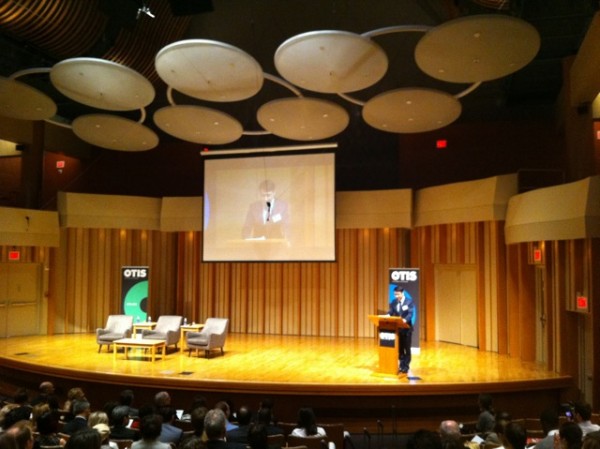By Adrienne Luce, Designing Futures Foundation’s Executive Director
 For many years, arts education advocates had the same conversations with the same groups of people about why the arts were important and why they should not be cut from our schools. In 2007, an initiative was launched by the OTIS College of Art and Design under the leadership of its president Samuel Hoi that changed everything. For the first time the conversation about the value of the arts was completely re-contextualized and expanded to a broad and diverse audience. Last week I attended the 5th annual OTIS Report on the Creative Economy of the Los Angeles Region held at the Colburn School in downtown LA, and I was just as impressed and enlightened this year as I have been every year since the project’s inception.
For many years, arts education advocates had the same conversations with the same groups of people about why the arts were important and why they should not be cut from our schools. In 2007, an initiative was launched by the OTIS College of Art and Design under the leadership of its president Samuel Hoi that changed everything. For the first time the conversation about the value of the arts was completely re-contextualized and expanded to a broad and diverse audience. Last week I attended the 5th annual OTIS Report on the Creative Economy of the Los Angeles Region held at the Colburn School in downtown LA, and I was just as impressed and enlightened this year as I have been every year since the project’s inception.
Did you know that the creative economy in Southern California produces in excess of $200 billion in total sales and receipts, and is one of the largest employment-generators with more than 640,000 direct and indirect jobs? Neither did I or anyone else who attended the first event in 2007. Hearing those kinds of figures made everyone stop and pay attention. Arts education advocates and practitioners finally felt vindicated. The “creative economy,” as explained in the OTIS report, “is defined as the market impact of businesses and individuals involved in producing cultural, artistic and design goods and services.” However, it is more than that. As the report argues, “Creativity is a native strength of Southern California. Its richness springs from the specific conditions of Los Angeles: place, time, and people. In challenging economic times such as these, our policy makers and economy advocates should value and invest in creative enterprises and professionals for expeditious growth, and in arts education and cultural participation for long-term sustainable talent cultivation. The current economy mandates smart solutions. Creativity has to be part of our big picture.”
Dr. Nancy D. Sidhu, Ph.D, Chief Economist of the Kyser Center for Economic Research at the Los Angeles County Economic Development Corporation, has led the study for the past five years. It was amazing to see an economist take center stage again this year to report her findings to an enthusiastic and packed crowd. Dr. Sidhu stated that the entertainment industry is not surprisingly still the top creative sector. Architecture is the 6th and in 2010 8,600 direct jobs in Los Angeles County were in architecture and interior design and generated $2.1 billion in direct revenues. (There were lots of other facts and figures all of which are interesting, read the 2011 Otis Report on the Creative Economy of the Los Angeles Region for more info.)
There was definitely a buzz in the air as Samuel Hoi celebrated the cultural richness of the Grand Avenue corridor, especially with the Broad Museum (Diller Scofidio + Renfro) under construction across the street, we could all see the vibrant creative economy in action. After Dr. Sidhu’s report there was a panel discussion among James Canales, President and CEO of The James Irvine Foundation, Russell Goldsmith, Chairman and CEO of City National Bank, and Joan Weinstein, Associate Director of The Getty Foundation. They all agreed that the arts are essential for a just and vibrant society and everyone mentioned the incredible Pacific Standard Time collaboration currently taking place all over Southern California. I loved when Russell Goldsmith said “creativity can’t be outsourced.” There is so much more that I could say about this event but instead I suggest you watch the “Share the Facts” video above and visit the website. I am already planning to mobilize an HMC contingency to attend the event next year!
